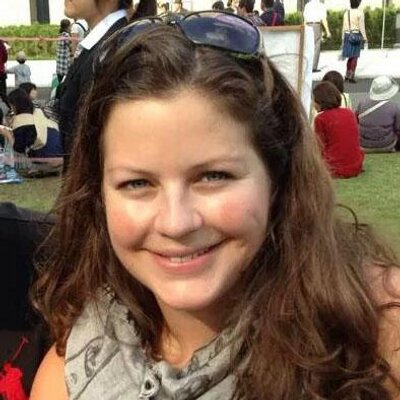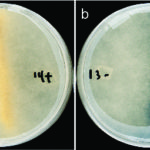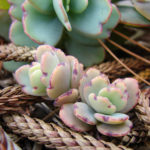 Neuroscientists can now explore a beta version of the new Neurodata Without Borders: Neurophysiology (NWB:N 2.0) software and offer input to its developers. The 2.0 software was developed by Berkeley Lab Computational Research Division’s (CRD’s) Oliver Ruebel and Andrew Tritt, in collaboration with Kristofer Bouchard (Biological Systems & Engineering Division, pictured), Loren Frank and Eddie Chang (UCSF), and the broader Neurodata Without Borders community. Read more on CRD’s website.
Neuroscientists can now explore a beta version of the new Neurodata Without Borders: Neurophysiology (NWB:N 2.0) software and offer input to its developers. The 2.0 software was developed by Berkeley Lab Computational Research Division’s (CRD’s) Oliver Ruebel and Andrew Tritt, in collaboration with Kristofer Bouchard (Biological Systems & Engineering Division, pictured), Loren Frank and Eddie Chang (UCSF), and the broader Neurodata Without Borders community. Read more on CRD’s website.
Potato blight’s chemical attack mechanism explained
 Jenny Mortimer, Deputy Vice President of the Feedstocks Division at the Joint BioEnergy Institute (JBEI) and Research Scientist with the Environmental Genomics and Systems Biology (EGSB) Division collaborated with a team of international researchers headed by scientists from the University of Tübingen to decipher the workings of the Cytolysin toxin, which is produced by some of the world’s most devastating crop diseases. The study shows that the Cytolysin binds to a class of glycosylated sphingolipid that Mortimer’s group studies. By producing plants which have modified forms of the sphingolipid, the toxin binding specificity could be determined. The study was published in Science today, December 14, and its findings may lead to ways of better protecting crops from such pathogens in the future. Read the Science news article about the study.
Jenny Mortimer, Deputy Vice President of the Feedstocks Division at the Joint BioEnergy Institute (JBEI) and Research Scientist with the Environmental Genomics and Systems Biology (EGSB) Division collaborated with a team of international researchers headed by scientists from the University of Tübingen to decipher the workings of the Cytolysin toxin, which is produced by some of the world’s most devastating crop diseases. The study shows that the Cytolysin binds to a class of glycosylated sphingolipid that Mortimer’s group studies. By producing plants which have modified forms of the sphingolipid, the toxin binding specificity could be determined. The study was published in Science today, December 14, and its findings may lead to ways of better protecting crops from such pathogens in the future. Read the Science news article about the study.
JGI Sheds Light on Fungal-Bacterial Mutualism
In heritable mutualisms, hosts pass on beneficial symbionts between generations. The origin of this relationship though, is often antagonistic and the parasite first needs to secure its own transmission before working with the host. Using the mutualistic relationship between the plant pathogenic fungus Rhizopus microsporus (Rm) and Burkholderia endobacteria, JGI and Cornell University researchers reported on how the antagonistic-to-mutualistic transition occurs in Nature Communications. The team found that the oil-producing fungus is highly dependent on the Burkholderia endobacteria to proliferate both sexually and asexually. This dependence is consistent with the addiction model of mutualism evolution. Read more on the JGI website.
Landry Receives Early Career New Innovator Award
Markita Landry, MBIB faculty scientist and UC Berkeley assistant professor of chemical and biomolecular engineering, is a recipient of the second annual New Innovator in Food and Agriculture Research Award for plant efficiency. Landry is interested in discovering routes for nanoparticle transport across plant cell walls and chloroplast membranes for use in GMO-free gene editing.
JGI Helps ID Succulent Genes for Water Use Efficiency
In the presence of abundant water and sunlight, most plants conduct photosynthesis using what is known as the C3 pathway. Some plants can conduct C4 photosynthesis in water-limited conditions; a different enzyme collects carbon dioxide from the air to form a 4-carbon chain that lends itself to the pathway name. In water-poor conditions, some plants collect and process carbon at night rather than during the day through crassulacean acid metabolism (CAM) photosynthesis, named for its discovery in succulents. In the December 1, 2017 issue of Nature Communications, a team led by Oak Ridge National Laboratory researchers and including scientists at the Joint Genome Institute sequenced and analyzed the genome of Kalanchoë fedtschenkoi to better understand how this plant transitioned from C3 to CAM photosynthesis. Read more on the JGI website.
- « Previous Page
- 1
- …
- 134
- 135
- 136
- 137
- 138
- …
- 213
- Next Page »
Was this page useful?






